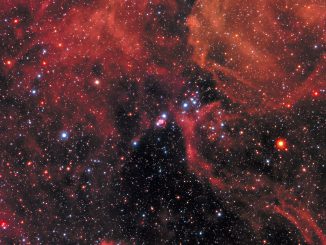The globular cluster NGC 6652 is found in the constellation Sagittarius, about 30,000 light years from Earth and just 6,500 light years from the center of the Milky Way. This star-studded image was captured by the Hubble Space Telescope’s Advanced Camera for Surveys and Wide Field Camera 3 for two studies, one focused on determining the ages of such globulars and their contribution to the gravitational potential of the galaxy and one to pin down the proportions of carbon, nitrogen and oxygen in clusters like NGC 6652. The bright blue stars of the globular are seen behind brighter foreground stars marked by diffraction spikes.




